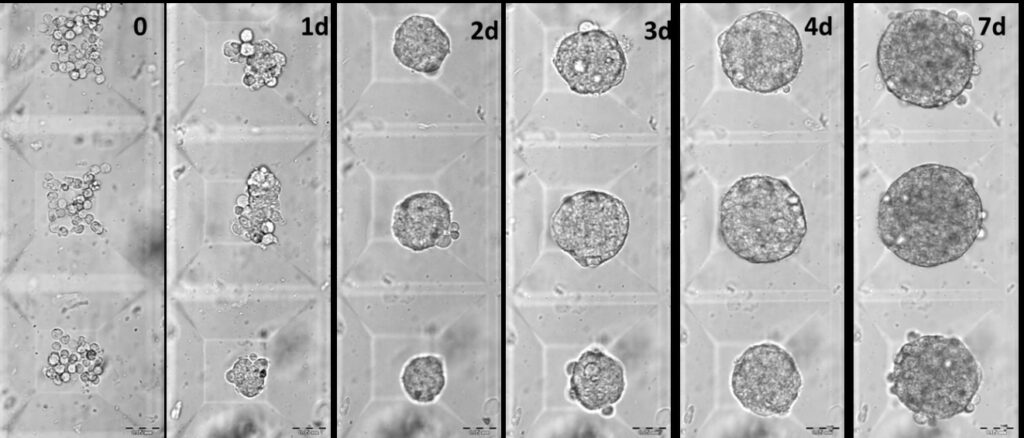Multi-Cellular Cancer Spheroids/Organoids
The lack of biomimetic in vitro models that can recapitulate the features of solid tumors impedes the development of new therapies. In order to overcome the significant distinctions in drug sensitivity between conventional 2D cell culture and three dimensional (3D) tumor multi cellular structures of human cancer spheroid models were developed in recent years at the Jerome Schottenstein Center. This scientific work has involved 3D culture approach; technology, measurement methodology and analysis. The studies deal with the design and fabrication of miniature devices for generation, retention and screening of 3D multi-cellular structures using optical imaging methods, as well as their adaptation for applications in biological research and in cancer medicine.
Within the scope of these studies is the production of tumor-on-a-chip (TOC) systems which are cellular models that mimic tumor microenvironment, and imitate its pathological characteristics. The basic component of the system is an imaging platform featuring a high optical quality glass bottom patterned with a Hydrogel Micro-Chambers Array (HMCA) on its inner surface. The array of micro chambers made of hydrogel is formed by a unique propriety technology developed at the Schottenstein center. Each of the Nano-liter - volume micro-chamber is design to occupy individual or several live cells while being manipulated and observed via microscope and high resolution imaging. The HMA technology facilitates spontaneous generation of numerous 3D cancer spheroids in the presence of ECM components and stromal cells and enables control over matrix stiffness and its geometry. Such advanced cell-based systems, or “tumor-on-a-chip” models of several human tumors were established from cancer cell lines. Multi-parametric image analysis and dataset is being used to predict invasive potential and drug response.
This advanced cell based system is being used in various research areas including in cutting edge cancer studies, by offering a new standard for predicting how a human may respond to medicines, chemicals, and foods with greater precision and control than current existing methods.
